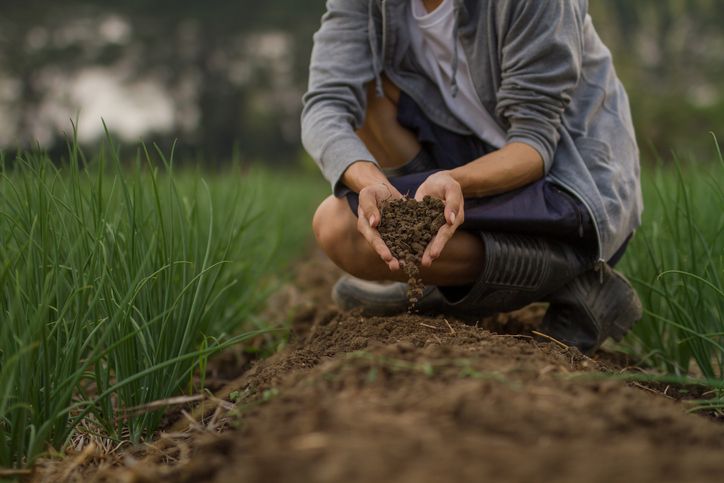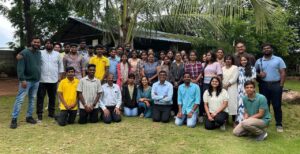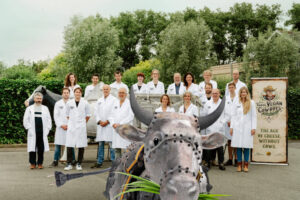Sarah Nolet is managing partner at Tenacious Ventures, a VC firm investing at the intersection of digitally native agriculture and climate solutions. She is based in Sydney, Australia.
The views expressed in this guest commentary are the author’s own and do not necessarily represent those of AFN.
There’s an imperative and opportunity for agriculture to both reduce its environmental footprint and provide decarbonization solutions to the rest of the economy. Market mechanisms, such as carbon markets and ecosystem services programs, are being widely heralded as a solution: a pathway to create incentives for behavior change, reward farmers, help corporates meet their climate commitments, and ultimately, deliver much-needed environmental benefits.
To realize this potential, we must quickly scale these programs in and for agriculture. Yet this is not straightforward, as carbon markets were originally designed by and for other sectors. And in agriculture, carbon sequestration and other ecosystem services are byproducts of a primary activity: food and fiber production.
Carbon programs in ag can deliver benefits by enabling farmers to generate and sell credits that represent emissions reductions and avoidances. Common examples of accepted practices for generating carbon credits include eliminating tillage and cover cropping to sequester more carbon in soil (and increase soil organic carbon, which is beneficial to production).
This challenge — and the opportunities it creates — is what we explored at the recent World Agri-Tech Innovation Summit in San Francisco in a panel titled ‘Carbon Programs: Building A Global Accounting System to Reward Farmers for Ecological Services.’
I was joined on the panel by Debbie Reed (Ecosystem Services Market Consortia), Marion Verles (SustainCert), Chris Harbourt (Indigo), Benoit Genot (Valagro), and Dhruv Sawhney (Nurture.Farm).
Here’s a summary of the key challenges preventing scale in carbon programs, and potential solutions.
Beyond the soil organic carbon gold rush
Commercial, regulatory, and environmental pressures are driving significant interest in carbon programs from players along the value chain and outside of agriculture. As Marion said: “Right now, it’s a gold rush.”
The good thing about that, Debbie explained, is we’ve moved from greenwashing toward strategic action by corporates who see opportunities arising from these pressures.
But agriculture is complex; so as we look beyond the narrow objective of increasing soil organic carbon to selling offset credits, how can we also find opportunities for a broader set of solutions that embrace the industry’s nuances?
Examples discussed on the panel include grazing management; emissions reduction methodologies in both cropping (eg, organic and biological inputs) and livestock (eg, enteric emissions) systems; and, as Benoit highlighted, biological pathways emerging from an advanced understanding of crop physiology.
Offsets are only one option
The potential for farmers to get rewarded for the environmental benefits they provide, via sale of offsets, is exciting; and an important leverage point for climate adaptation and mitigation. However, most farmers are upstream suppliers to many larger corporates who must make, and meet, their own climate targets. As those targets come under increasing scrutiny, Scope 3 emissions are coming into focus.
As a result, the range of pathways for farmers to be rewarded is expanding beyond just offsets to also include ‘insets’ – initiatives led by downstream partners (eg, food companies) who are working to reduce emissions along the entire supply chain.
Debbie said that as this shift occurs, “we need to make sure there is limited competition between farmers participating in inset and offset programs.”
Agriculture produces just 1% of carbon credits, data suggests – read more here
While potentially confusing, the rise of insets markets presents an opportunity to overcome the challenges that concepts such as additionality, double-counting, and permanence present in agriculture. For example, double-counting within the same value chain becomes acceptable, even necessary, to drive change; and permanence is handled through an ongoing commitment, rather than an absolute – something that is not commercially viable in agriculture.
Letting go of these constraints also creates opportunities for new financial solutions, such as insurance, to enable and incentivize practice change for farmers and ranchers.
These are not your grandfather’s commodities
Nature-based solutions are not physical commodities that are delivered. As Chris explained, “there has to be a digital twin, and you get paid from the digital twin.”
As we build bridges between the physical and digital realms, there’s a requirement for a whole new supply chain; and challenges such as data capture, sharing, and privacy become central. For startups, farmers, and corporates alike, this means partnerships and underlying digital infrastructure, such as APIs and smart contracts.
Digital capabilities and collaboration are lacking
Despite the requirement for digital infrastructure, much of the carbon program value chain is still operating under industrial-era technologies. This is particularly true of verification, where wait times for projects can range from 18 to 24 months. As Marion summarized: “The verification industry has, to date, been completely untouched by digital transformation.”
Part of the challenge is that the right people aren’t in the same room. We need collaboration across scientific, agricultural, economic, and financial sectors, driven by digital-era product managers who will maintain a laser focus on user experience and design for scale. A particular opportunity is in standardizing how we model and conduct ground-truthing to take advantage of automation. And these capabilities must be developed within organizations, as well as between them. We will not get to scale if we continue to rely on consultants and middlemen to drive change.
Access for smallholder farmers
Much of the carbon discussion focuses on developed countries; yet there’s a massive opportunity to design programs that unlock participation from the hundreds of millions of smallholder farmers around the world. And in fact, we must – as these farmers are particularly vulnerable to the costs and risks of climate change.
The challenge, however, is that programs designed for the developed world are not accessible to smallholder farmers; they cannot, for example, bear the cash flow implications of waiting for certifications to be completed and money to start flowing.
This creates opportunities for more direct support from the channel, as well as a need to reconsider program design. For example, does 90% accuracy as a requirement make sense in this context?
Dhruv’s view is that the key is to “productize credits” including by “simplifying the entry requirements, and creating systems that are easy to navigate and comply with.”
The Tenacious takeaway
At our firm, we think a lot about the need to design business models that recognize the difference between users and beneficiaries, and which harness incentives that drive adoption. It seems that for now, most ecosystem service markets, and carbon markets in particular, have been designed for the beneficiaries: the offset buyers. The complexity and fragmentation of these markets are seriously inhibiting adoption by farmers, who are the users of these programs. The programs are not fit for purpose – and unless they become farmer-first, they will struggle to scale.
As we look ahead to the next World Agri-Tech Innovation Summit — or consider the limited number of years we have left to massively reduce and draw down emissions — we must design these programs and markets not only to be digitally native, but also with farmers in developed and developing economies front of mind.




